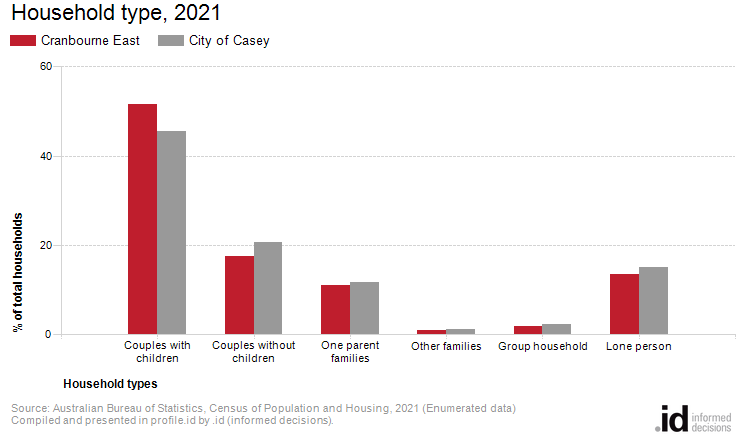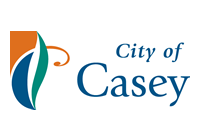Cranbourne East
Household type
In Cranbourne East, 51.5% of households were made up of couples with children in 2021, compared with 45.4% in City of Casey.
Cranbourne East's household and family structure is one of the most important demographic indicators. It reveals the area's residential role and function, era of settlement and provides key insights into the level of demand for services and facilities as most are related to age and household types.
To continue building the story, Cranbourne East's Household Summary should be viewed in conjunction with Households with Children, Households without Children, Household Size, Age Structure and Dwelling Type.
If you're looking at this data to prepare a housing strategy, learn more here.
Derived from the Census question:
'What is the person's relationship (to each other person in the household)?'
Households
Source: Australian Bureau of Statistics, Census of Population and Housing (opens a new window) 1996 and 2021. Compiled and presented by .id (opens a new window)(informed decisions).
(Enumerated data)

Compiled and presented in profile.id by .id (informed decisions).

Compiled and presented in profile.id by .id (informed decisions).
Dominant groups
Analysis of the household/family types in Cranbourne East in 2021 compared to City of Casey shows that there was a higher proportion of couple families with child(ren) as well as a lower proportion of one-parent families. Overall, 51.5% of total families were couple families with child(ren), and 10.9% were one-parent families, compared with 45.4% and 11.6% respectively for City of Casey.
There were a lower proportion of lone person households and a lower proportion of couples without children. Overall, the proportion of lone person households was 13.5% compared to 15.0% in City of Casey while the proportion of couples without children was 17.5% compared to 20.7% in City of Casey.
Emerging groups
The number of households in Cranbourne East increased by 7,211 between 1996 and 2021.
The largest changes in family/household types in Cranbourne East between 1996 and 2021 were:
- Couples with children (+3,720 households)
- Couples without children (+1,250 households)
- Lone person (+981 households)
- One parent families (+791 households)
